Naran is a picturesque area in the Kaghan Valley of Northern Pakistan. This region is renowned for its stunning landscapes and diverse wildlife species. Exploring Naran reveals a variety of wild animals in Naran Valley that make the area unique.
Click here to learn more about The Northern Areas of Pakistan: True Nature’s Wonderland
Here is a comprehensive table for all the wildlife you can encounter in Naran.
| Category | Examples |
| Animals | Markhor, Himalayan Ibex, Snow Leopard |
| Birds | Himalayan Monal, Golden Eagle, Peregrine Falcon |
| Flowers | Primula, Gentiana, Wild Iris, Potentilla, Anemone |
Major Wildlife Species of Naran
Wildlife is vital to Naran as it enhances the region’s natural beauty and attracts tourists, contributing to the local economy. The diverse animal and bird species, such as the Himalayan Monal and the Markhor, play key roles in the ecosystem.
These animals maintain the balance of the food chain and support biodiversity. Protecting wildlife also helps preserve the unique natural habitats of Naran. Here are the major wildlife species found in Naran:
Mammals
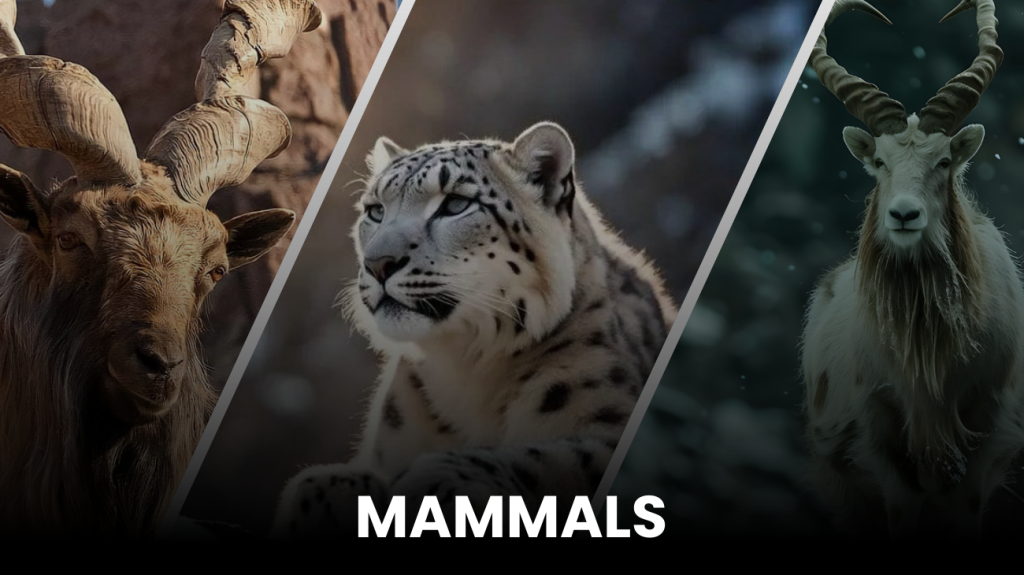
- Markhor: One of the most notable Naran wildlife species, the Markhor is a wild goat with distinctive twisted horns. These animals are found in Naran Valley wildlife’s rocky and mountainous areas. They are often spotted grazing in the high-altitude meadows.
- Himalayan Ibex: Another prominent species in Naran Valley wildlife is the Himalayan Ibex with its impressive curved horns. It thrives in the higher elevations and is known for its agility on steep terrain. The ibex can be seen climbing rocky slopes.
- Snow Leopard: This elusive big cat is part of the wildlife of that region but is rarely seen due to its camouflaged fur. Snow leopards live in the most remote and rugged areas. They are a key focus of wildlife sanctuaries in Naran due to their endangered status.
Birds
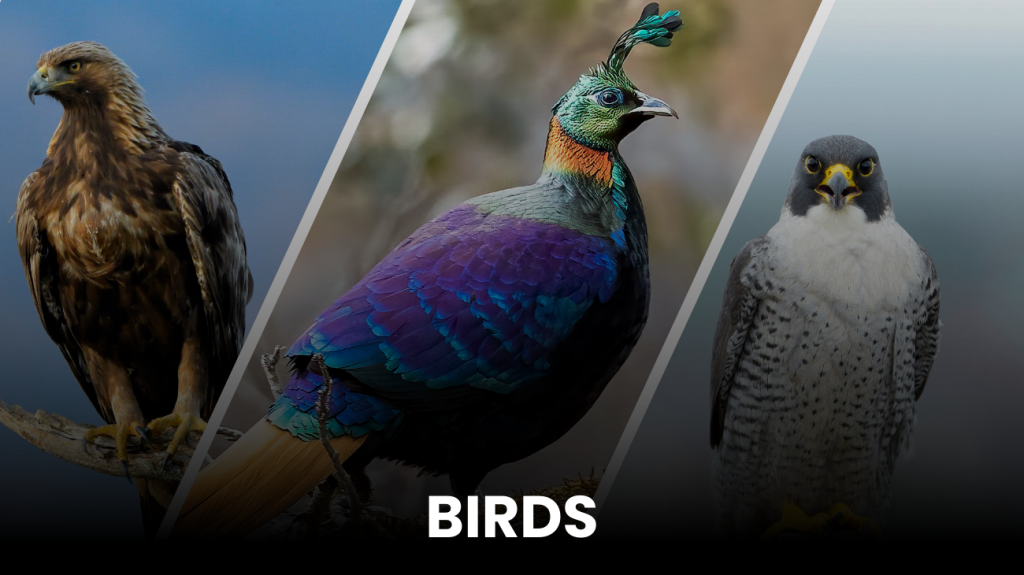
- Himalayan Monal: Known for its vibrant plumage, the Himalayan Monal is a highlight of the wildlife of Naran. This bird is often found in forested regions and is a symbol of the area. Its colorful feathers make it a favorite among bird watchers.
- Golden Eagle: A majestic bird of prey, the Golden Eagle soars above the Naran landscapes. It can be spotted in the high mountains and is known for its hunting skills. This eagle is a common sight in the region.
- Peregrine Falcon: The Peregrine Falcon, known for its incredible speed, is also found in Naran. This bird is often seen in the higher elevations of the valley. It adds to the rich diversity of animals in Naran Valley.
Flora and Fauna of Naran
The flora and fauna of Naran are essential because they maintain ecological balance and support the health of the environment. Plants provide oxygen, stabilize soil, and offer habitats for various animal species. Meanwhile, wildlife contributes to the natural beauty of Naran, making it a vital area for conservation and sustainable tourism.
Flora
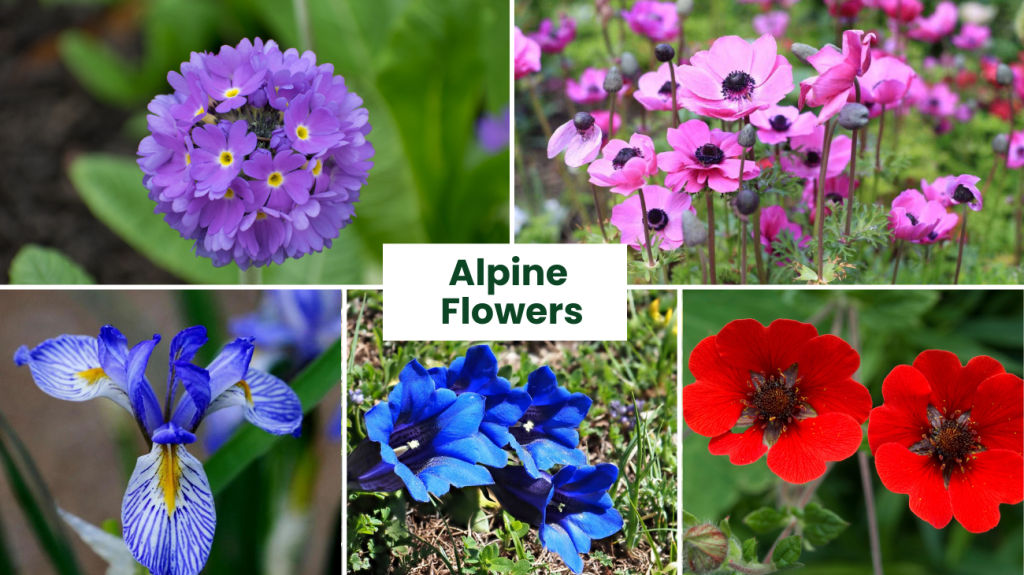
- Alpine Flowers: The high-altitude meadows of Naran are adorned with colorful alpine flowers such as:
- Primula: Commonly known as primrose, these flowers are often found in the alpine meadows of Naran. They are known for their vibrant colors, ranging from pink to yellow.
- Gentiana: Gentians are beautiful blue flowers that are common in the high-altitude regions around Naran. They often grow in grassy meadows and rocky areas.
- Wild Iris: These flowers are found in the meadows and along riverbanks in Naran. They are known for their delicate purple and yellow petals.
- Potentilla: Also known as cinquefoil, Potentilla species are found in Naran’s grassy areas and meadows. They typically have bright yellow or white flowers.
- Anemone: Anemones are commonly seen in the high-altitude areas around Naran. These flowers bloom in various colors, including white, yellow, and blue.
These flowers thrive in the cold, mountainous climate and add to the region’s beauty.
- Coniferous Trees: The forests of Naran are dominated by coniferous trees like pine and fir. These trees provide habitat and shelter for many wildlife species.
- Shrubs and Grasses: Various shrubs and grasses cover the lower elevations and meadows. These plants are crucial for supporting the local wildlife and providing food and cover.
Fauna
Butterflies in Naran
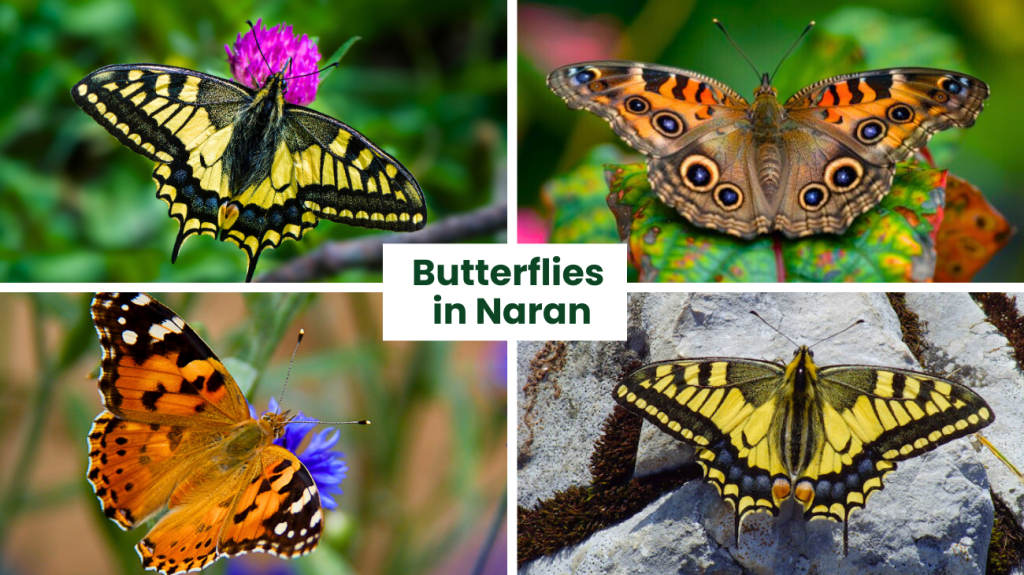
- Common Yellow Swallowtail: This butterfly is notable for its vibrant yellow and black coloring and is frequently seen in Naran’s meadows.
- Painted Lady: Known for its striking orange and black patterns, this migratory butterfly adds color to the local flora.
- Indian Peacock Butterfly: Recognizable by its eye-like spots, this butterfly is a visually stunning resident of the region.
- Himalayan Swallowtail: A large, colorful butterfly adapted to the high-altitude environment of Naran.
Insects in Naran

- Mountain Grasshopper: Common in the grassy meadows of Naran, this grasshopper thrives in the alpine habitat.
- Himalayan Beetle: Adapted to cooler mountainous regions, this beetle is a part of Naran’s diverse insect population.
- Forest Moth: A nocturnal moth that contributes to the nighttime biodiversity of Naran’s forests.
Best Spots for Wildlife Viewing
If you are planning wildlife tours in Naran, make sure you visit these places to spot rare sightings.
| Location | Wildlife Sightings |
| Saif-ul-Malook Lake | Various birds, Himalayan Monal |
| Lulusar Lake | Himalayan Ibex |
| Shogran | Himalayan Monal, diverse wildlife |
| Battakundi | Himalayan Ibex, Markhor, various birds |
| Kaghan Valley | Snow Leopard, Himalayan Monal, Markhor, Ibex |
| Siri Paye Meadows | Himalayan Ibex, various birds and insects |
| Jalkhad | Himalayan Monal, Snow Leopard (rare sightings), diverse birds |
Related: How a Getaway in Naran Valley Helped Ease a Nervous System

Fun Facts about Naran’s Wildlife
- The national animal of Pakistan, Markhor’s horns can grow up to 1.5 meters long and are used for climbing and fighting.
- The Himalayan Monal’s feathers can change color depending on the angle of light.
- Snow leopards have a unique ability to blend into their snowy surroundings, making them hard to spot.
- The Mountain Grasshopper in Naran has developed a slower metabolism to survive the cooler temperatures and lower oxygen levels of the alpine meadows.
- The Himalayan Blue Sheep in Naran has a coat color that blends with the rocky and snowy terrain, aiding in camouflage and predator evasion.
Wildlife Conservation Efforts
Naran’s diverse habitats include dense forests, alpine meadows, and riverbanks. These environments support a wide range of Naran wildlife species. Conservation efforts focus on protecting these habitats and the animals that live there.
Wildlife sanctuaries in Naran work to safeguard endangered species and their homes. Local and international organizations are involved in these conservation efforts. Tourists can help by following guidelines for wildlife viewing and minimizing their impact on the environment.
Organizations and Initiatives
Several organizations are dedicated to protecting wildlife in Naran. The Wildlife Conservation Society of Pakistan focuses on preserving local habitats and endangered species. They work on anti-poaching initiatives and habitat restoration.
Community Involvement
Local communities play a crucial role in conservation. The Naran Community Wildlife Protection Program engages residents in monitoring wildlife and protecting natural resources. Their efforts have led to the recovery of several key species and improved local awareness.
Success Stories
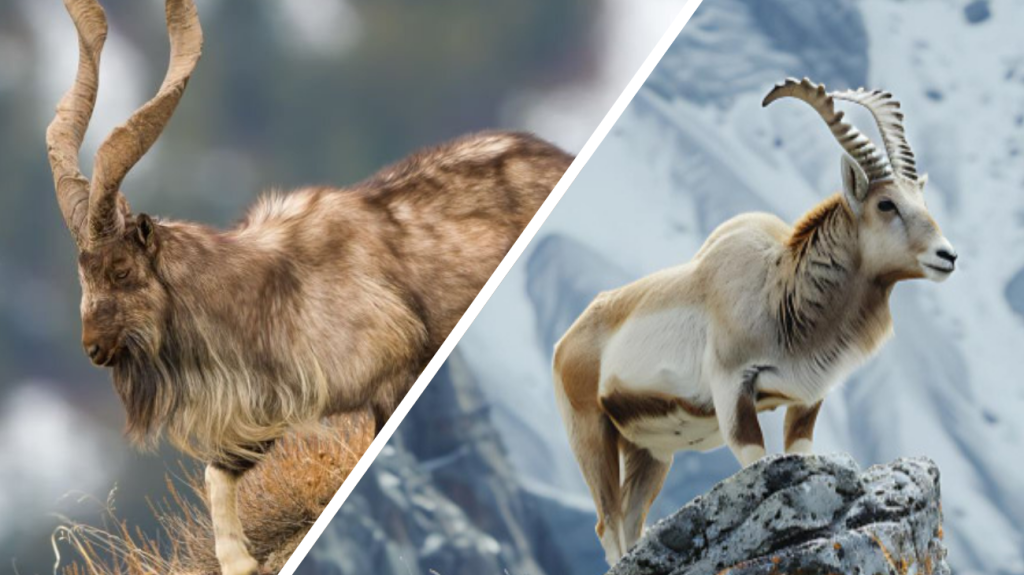
Thanks to these efforts, populations of the Markhor and Himalayan Ibex have stabilized. Improved anti-poaching measures and habitat management have contributed to these successes.
Tips for Visitors
Follow these tips for an overall enjoyable yet thrilling experience
Ecotourism and Responsible Wildlife Viewing
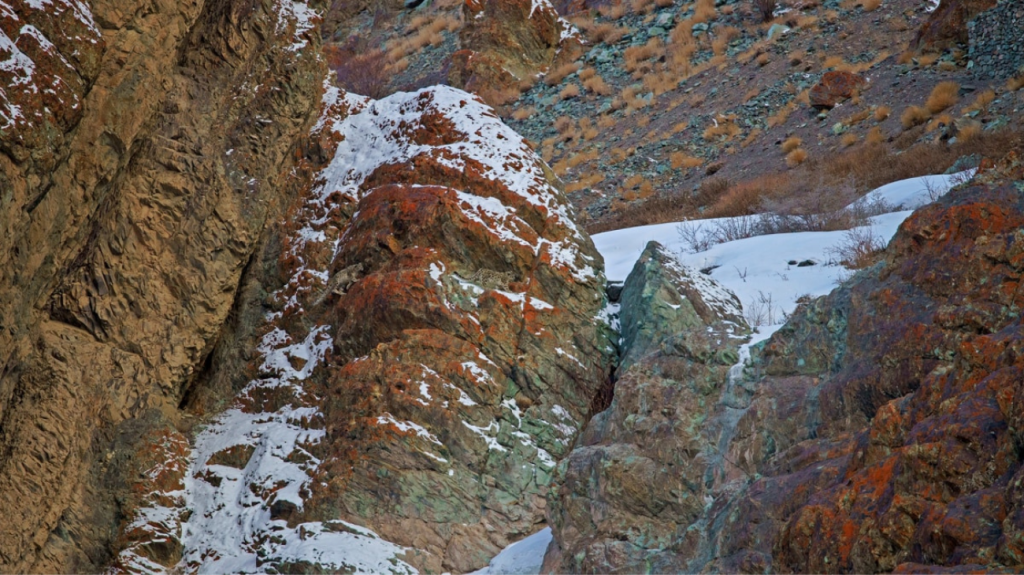
- Ecotourism helps fund conservation and promotes awareness.
- Visitors should maintain a respectful distance from wildlife to avoid stressing animals.
- Avoid littering and stay on marked trails to protect habitats.
Best Times for Wildlife Viewing in Naran
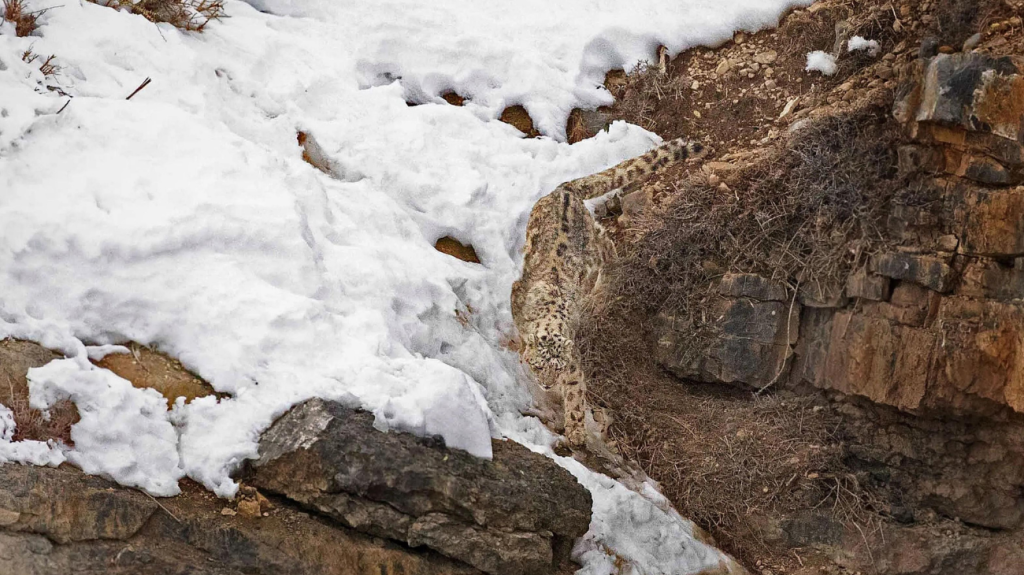
- To see the Snow Leopard, visit from late autumn to early spring.
- Markhor and Himalayan Ibex are most active during the summer months.
- Early mornings and late afternoons are the best times for spotting birds like the Himalayan Monal.
Safety and Health Tips for Naran Wildlife Tours
- Stay safe by keeping a respectful distance from wild animals.
- Wear protective clothing to avoid tick bites and stay hydrated in high-altitude areas.
- Always follow local guides’ advice to ensure a safe experience.
- Bring a basic first aid kit like bandages, antiseptic, and insect repellent to handle minor injuries or insect bites while in the wilderness.
Accommodation with Wildlife Views
Several lodges offer views of wildlife in Naran. Eco-Friendly Retreat is known for its sustainable practices and proximity to wildlife areas. Keep a budget in your mind so that you can be facilitated according to your preferences and comfort level.
Conclusion
Naran Valley is home to a wide range of wildlife and natural beauty. Exploring the area provides a chance to see diverse species in their natural habitats. Visitors are encouraged to explore responsibly and support local conservation efforts to protect Naran’s wildlife.
Guide to Pakistan is a valuable resource for discovering the country’s diverse attractions. It provides detailed information on various tourist spots, cultural sites, and natural landscapes. With insights on local customs, accommodations, and travel routes, it helps travelers explore Pakistan’s rich heritage and scenic beauty.



